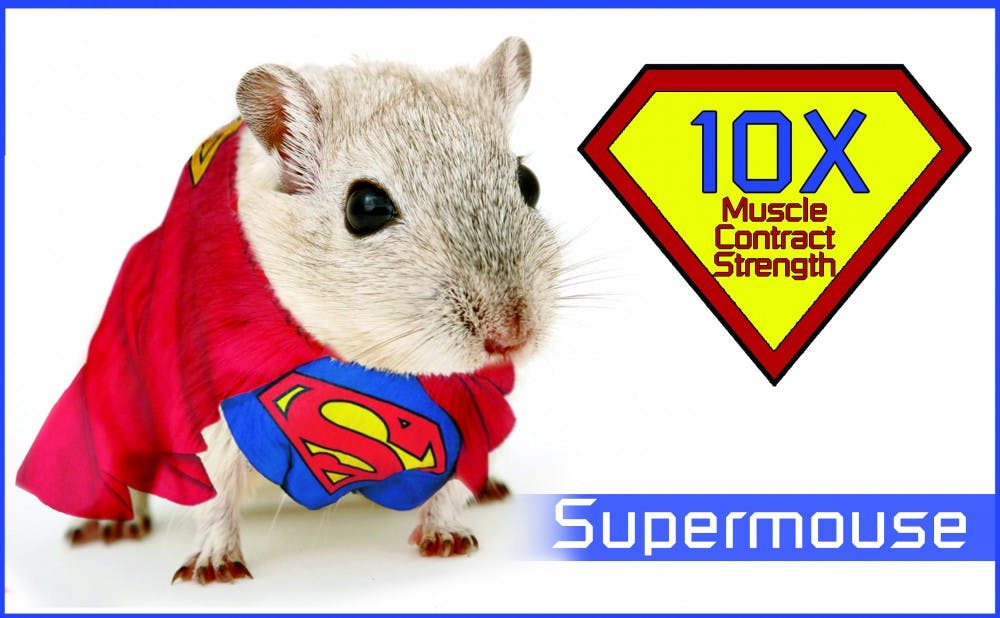A team of biomedical engineers at Duke’s Bursac Laboratory have made a recent breakthrough which allows them to grow and implant skeletal muscle in mice more advanced than any previously synthesized tissue. Researchers found that muscle tissue grown from specific types of stem cells isolated from the muscles of newborn mice could even repair itself after extensive injury.
The findings have significant implications for the medical industry. The artificially-synthesized tissue could be used to test different drugs, gene therapies and other therapies in vitro as alternatives to trials that would normally require the use of live animals.
“When we measured the muscle contraction strength, we found that it was 10 times higher than anybody else had previously recorded,” said principal investigator Nenac Bursac, an associate professor of biomedical engineering.
To synthesize the tissue, Bursac and his colleagues took the isolated stem cells—called satellite cells—and suspended them in hydrogel, a gel-like substance similar to blood clots. After about two weeks, the cells formed new muscle fibers.
The team conducted a variety of tests to determine the effectiveness of the new tissue and measured contractile strength by administering a series of electrical pulses, forcing the muscles to contract or flex while being monitored.
To test the healing capabilities of the tissue, the team then injected the engineered muscle with a toxin derived from snake venom, damaging and corroding most of the muscle fibers. The satellite cells within the muscles regenerated the fibers over a period of 10 days, proving their self-healing capabilities.
With the help of Greg Palmer, assistant professor of radiation oncology, the muscle was then implanted into the backs of live mice in special chambers. For two weeks, the team observed how the muscle integrated with the bodies of living organisms.
“Through a glass panel in the chamber, we observed in real time how the tissue matured and how blood vessels grew into the implanted muscle fibers,” Palmer wrote in an email Monday.
In naturally-occurring muscles, these satellite cells are always prepared to repair injured muscles after accidental trauma or heavy exercise. But special circumstances in the artificial muscle meant that specific microenvironments had to be created to house the cells.
“Simply implanting satellite cells doesn’t work as well,” said lead author Mark Juhas, a fourth-year Ph.D. candidate in biomedical engineering. “The well-developed muscle we made provides niches for satellite cells to live in, and when needed, to restore the robust musculature and its function.”
For Bursac's team, successfully synthesizing and implanting muscle tissue in mice is only a stepping stone toward future applications for humans. Bursac and his associates are working with other biomedical engineers on a long-term project called “body on a chip," which involves the synthesis of various types of human tissue. Successful synthesis of human muscle would have significant implications for drug testing and gene therapy, which yield more accurate results when conducted on human rather than the animal tissue typically used.
In addition, the development of synthetic muscle could be critical in treating traumatic injuries. Implanting synthesized tissue into patients with severe injuries can aid faster recovery. Bursac noted, however, that this would take some time to develop. The creation of large, human-sized muscles requires vascularizing the tissue so it can receive nutrients—a challenge worthy of a Nobel Prize, he said.
Bursac’s team is moving quickly. It will soon publish a report detailing their research on artificially grown human skeletal muscle.
“We have had success in making synthetic human muscle,” Bursac said. “We are working on improving the strength [of the muscle]."
Get The Chronicle straight to your inbox
Signup for our weekly newsletter. Cancel at any time.

